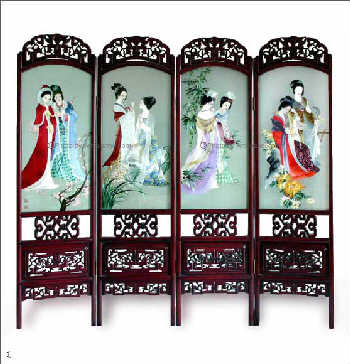Four Famous Chinese Embroidery Styles

Embroidery is a traditional Chinese craft which consists of pulling colored threads through a background material with embroidery needles to stitch colored patterns that have been previously designed on the ground. The adoption of different needling methods resulted in different embroidery styles and technique schools. Chinese embroidery had already reached a high level early in the Qin and Han dynasties, and silk and embroidery were the main products transported along the ancient Chinese Silk Road. The four famous Chinese embroidery styles are the Su embroidery of Jiangsu Province, the Xiang embroidery of Hunan Province, the Yue embroidery of Guangdong Province and the Shu embroidery of Sichuan Province.

Su embroidery
Su embroidery has a history of over 2000 years. It was produced on a large scale during the Song Dynasty. In the late Ming Dynasty and early Qing Dynasty, Shen Shou absorbed Japanese and Western fine art sand combined them with traditional Chinese embroidery skills to create the simulated embroidery with ray effects. In the 1930s, the irregular embroidery technique was created in the Zhengze Girl's Vocationa1 School in Danyang. In 1957, the Embroidery Research Institute was established in Suzhou.
Su embroidery is known for its delicacy and elegance. The design is usually very simple, high lighting a main theme. Its stitching is smooth, dense, thin, neat, even, delicate and harmonious. The thin thread is divided into up to 48 strands that are barely visible to the naked eye. Double-sided embroidery has the same pattern on both sides and uses the same embroidering method that does not show the joins in the stitches. Su embroidery products were sent to participate in the Panama World Fair in 1915. Since then, the style has become increasingly famous throughout the world.
